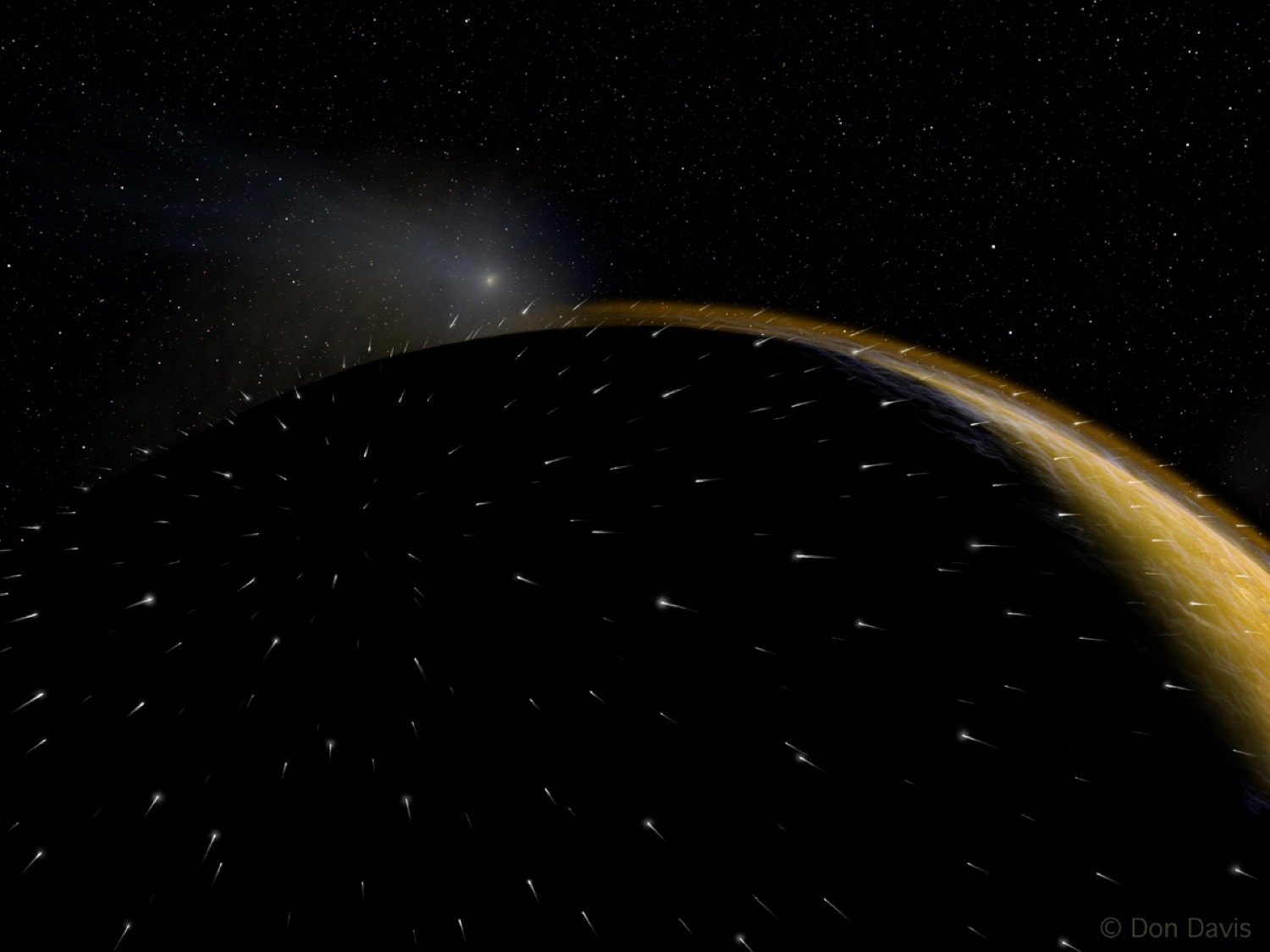Comet's 2014 Mars Flyby Caused Most Intense Meteor Shower Ever Recorded

The annual Perseid meteor shower may be great, but it's got nothing on the brief sky show a comet gave Mars a few years back.
Comet Siding Spring produced the most intense meteor shower in recorded history when the object flew by the Red Planet in October 2014, according to newly analyzed data collected at the time by NASA's Mars Atmosphere and Volatile Evolution (MAVEN) orbiter.
MAVEN'S observations suggest that the Siding Spring shower boasted about 108,000 meteors per hour at its peak and lasted up to 3 hours, scientists led by Matteo Crismani, of the University of Colorado Boulder, reported today (Sept. 21) in a presentation at the European Planetary Science Congress 2017 (EPSC 2017) in Riga, Latvia. [Mars-Bound Comet: Photos of Comet Siding Spring]
For comparison, viewers with dark skies can usually count on seeing about 80 meteors per hour during the mid-August peak of the Perseid meteor shower, which is perhaps the most famous and reliably impressive of Earth's annual showers.
The Perseids and other such showers occur every year when our planet plows through streams of debris shed by comets over the eons. Each shower is caused a particular debris stream. (In the Perseids' case, this debris comes from Comet Swift-Tuttle.)
The Siding Spring Martian shower, however, was a one-off event. The comet zoomed within 87,000 miles (140,000 kilometers) of the Red Planet's surface on Oct. 19, 2014, sending huge numbers of particles careening into the thin Martian atmosphere.
"This is one of the most exciting planetary events that we'll see in our lifetime," Beatriz Sanchez-Cano, of the University of Leicester in England, said in a statement. "Mars was literally engulfed by the coma, the comet's outer atmosphere, for several hours."
Get the Space.com Newsletter
Breaking space news, the latest updates on rocket launches, skywatching events and more!
Scientists therefore observed the flyby using a number of instruments, including the spacecraft orbiting the Red Planet and roving across its surface. (MAVEN arrived just in time for the show, entering orbit around Mars in September 2014.)
Sanchez-Cano also presented Siding Spring flyby results at EPSC 2017 today. Those results are based on observations by the European Space Agency's Mars Express orbiter, as well as NASA's MAVEN, Mars Odyssey orbiter and Curiosity rover.
"A deeper analysis of the data shows that the comet's interaction with Mars is much more difficult to understand than we expected, because of the effects of a CME that hit Mars a few hours earlier," Sanchez-Cano said in the same statement. (CMEs are coronal mass ejections, huge sun eruptions that send clouds of solar plasma streaking into space at millions of miles per hour.)
"In addition, the encounter happened at the peak of the Martian dust season," she added. "We need to understand the full context of the observations in order to separate out the real cometary effects on Mars."
Comet Siding Spring, also known as C/2013 A1, was discovered in January 2013 by astronomer Robert McNaught at Australia's Siding Spring Observatory. The roughly 0.3-mile-wide (0.5 km) Siding Spring came to the inner solar system from the Oort Cloud, a distant realm that houses trillions of comets. Siding Spring won't pass our way again for millions of years.
Follow Mike Wall on Twitter @michaeldwall and Google+. Follow us @Spacedotcom, Facebook or Google+. Originally published on Space.com.
Join our Space Forums to keep talking space on the latest missions, night sky and more! And if you have a news tip, correction or comment, let us know at: community@space.com.

Michael Wall is a Senior Space Writer with Space.com and joined the team in 2010. He primarily covers exoplanets, spaceflight and military space, but has been known to dabble in the space art beat. His book about the search for alien life, "Out There," was published on Nov. 13, 2018. Before becoming a science writer, Michael worked as a herpetologist and wildlife biologist. He has a Ph.D. in evolutionary biology from the University of Sydney, Australia, a bachelor's degree from the University of Arizona, and a graduate certificate in science writing from the University of California, Santa Cruz. To find out what his latest project is, you can follow Michael on Twitter.









